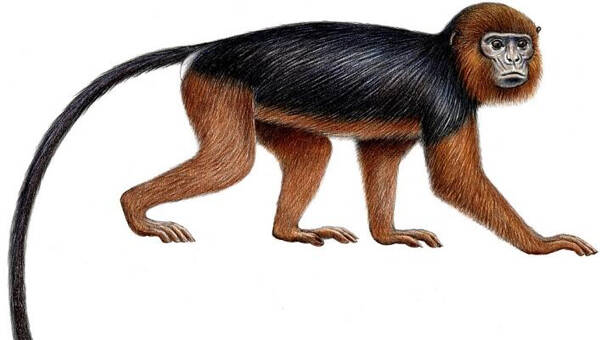Piliocolobus waldronae
IUCN
LCBasic Information
Scientific classification
- name:Piliocolobus waldronae
- Scientific Name:Piliocolobus waldronae,Miss Waldron’s Red Colobus,Miss Wattung's Red Colobus Monkey
- Outline:Primates
- Family:Cercopithecidae R.Colobus
Vital signs
- length:About 50 cm
- Weight:5-10kg
- lifetime:No verification information
Feature
Distribution and Habitat
Waldron's red colobus is found in Côte d'Ivoire. Possibly extinct: Ghana.
Waldron's red colobus inhabits subtropical and tropical dry forests and swamps.
Appearance
The snout is prominent, the jaws are strong, there are 32 teeth, the nostrils are close together facing forward and downward, the hands and feet have 5 fingers and toes, with flat nails, and can stand upright. It is diurnal. Except for a few, they have no cheek pouches, have a relatively complex digestive system, and have a sac-like stomach. They are closely related to leaf monkeys, and are three times larger than leaf monkeys. The teeth are high, the thumbs are degenerate, and the big toes are thick. The hind limbs are usually longer than the front straight limbs.
Details
Waldron’s Red Colobus (Piliocolobus waldronae) has been a subspecies of the Western Red Colobus since 1978. It is native to West Africa. It was thought to be extinct in 2000. However, new evidence suggests that there is a very small population of these monkeys living in the southeastern corner of Côte d’Ivoire. Waldron’s Red Colobus was discovered in December 1933 by Willoughby P. Lowe, a collector at the British Museum, who named it after an employee of the museum (Miss F. Waldron), a colleague on their expedition.

Waldron's red colobus monkeys live in the upper and middle layers of the forest and rarely come to the ground. The family consists of an average of 8-15 members, usually including an adult male, several females and their children who are not yet independent. They mainly feed on plant food such as leaves. Several females will jointly feed the young monkeys in the family. Males will leave home and become independent before they become adults, while females will stay in the family. They are arboreal and diurnal. In order to digest crude fiber, its stomach is divided into four chambers like herbivores, and has a rumination function.
Listed in the 2016 Red List of Endangered Species of the World Conservation Union (IUCN) ver 3.1 - Critically Endangered (CR).
Protect wild animals and eliminate game.
Maintaining ecological balance is everyone's responsibility!








